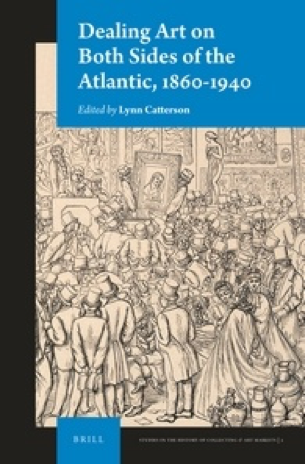 With a broad range of essays, this book presents several distinct ways in which dealers created and shaped demand and taste; how they supplied collectors, particularly American collectors, with works of art from Europe and how they promoted themselves in an increasingly competitive and lucrative market. Catterson begins with her own work on Stefano Bardini, who with Elia Volpi, another figure in the book, made Florence a centre of demand for Renaissance art at the end of the 19th century. His letters and account books are used to create a picture of a highly professional business, reinforced through networks of contacts and building on the expertise of the museum director Wilhelm Bode. In this as in other aspects, the essays in this volume demonstrate how strategies of the contemporary art market were established by these key dealers. While the focus of the book is on the collecting of old masters, it also covers the market for contemporary artists, with essays on two artist-dealers, the well-known Mary Cassatt and much less-well known Boston sisters Mary and Abigail Williams; as well as an essay on Kahnweiler and on César de Hauke, working for Jacques Seligman in the USA 1920-40. The essays do indeed serve, as the editor hoped, to nuance the workings of the art market, showing that the actual sales and prices were the result of much careful negotiation and preparation.
With a broad range of essays, this book presents several distinct ways in which dealers created and shaped demand and taste; how they supplied collectors, particularly American collectors, with works of art from Europe and how they promoted themselves in an increasingly competitive and lucrative market. Catterson begins with her own work on Stefano Bardini, who with Elia Volpi, another figure in the book, made Florence a centre of demand for Renaissance art at the end of the 19th century. His letters and account books are used to create a picture of a highly professional business, reinforced through networks of contacts and building on the expertise of the museum director Wilhelm Bode. In this as in other aspects, the essays in this volume demonstrate how strategies of the contemporary art market were established by these key dealers. While the focus of the book is on the collecting of old masters, it also covers the market for contemporary artists, with essays on two artist-dealers, the well-known Mary Cassatt and much less-well known Boston sisters Mary and Abigail Williams; as well as an essay on Kahnweiler and on César de Hauke, working for Jacques Seligman in the USA 1920-40. The essays do indeed serve, as the editor hoped, to nuance the workings of the art market, showing that the actual sales and prices were the result of much careful negotiation and preparation.
Members of the Society for the History of Collecting can purchase this book with a discount; see the forthcoming autumn newsletter for details.
